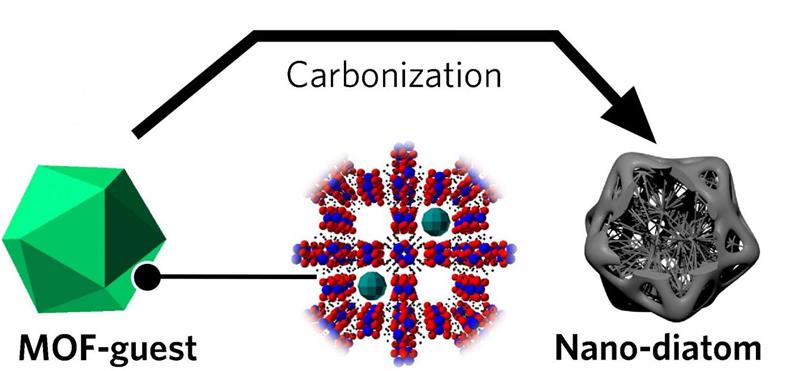According to the researchers, they found that adding salt to the inside of a supermolecular sponge and then baking it at a high temperature, transformed the sponge into a carbon-based structure.
Surprisingly, the salt reacted with the sponge in special ways and turned it from a homogeneous mass to an intricate structure with fibres, struts, pillars and webs. This kind of 3D hierarchically organised carbon structure has proven very difficult to grow in a laboratory, but is crucial in providing unimpeded ion transport to active sites in a battery.
The researchers have demonstrated that the use of these materials in lithium-ion batteries not only enables the batteries to be charged-up rapidly, but also at one of the highest capacities.
Due to their intricate architecture, the researchers have termed these structures 'nano-diatoms', and believe they could also be used in energy storage and conversion, for example as electrocatalysts for hydrogen production.

Lead author and project leader, Dr. Stoyan Smoukov, from Queen Mary's School of Engineering and Materials Science, said: "This metamorphosis only happens when we heat the compounds to 800°C and was unexpected. We have now discovered how to control the transformations with chemical composition."
These 3D carbon-based materials can exhibit improved wettability – to facilitate ion infiltration – along with high strength per unit weight and directional pathways for fluid transport.
It is, however, very challenging to make carbon-based multilevel hierarchical structures, particularly via simple chemical routes, yet these structures would be useful if such materials are to be made in large quantities for industry.
The supermolecular sponge used in the study is also known as a metal organic framework (MOF) material. The team believe these MOFs are attractive, molecularly designed porous materials with many promising applications such as gas storage and separation. The retention of high surface area after carbonisation - or baking at a high temperature - makes them interesting as electrode materials for batteries, the team added.
But so far, carbonising MOFs has preserved the structure of the initial particles like that of a dense carbon foam. By adding salts to these MOF sponges and carbonising them, the researchers say they discovered a series of carbon-based materials with multiple levels of hierarchy.
Dr R. Vasant Kumar, a collaborator on the study from University of Cambridge, said: "This work pushes the use of the MOFs to a new level. The strategy for structuring carbon materials could be important not only in energy storage but also in energy conversion, and sensing."
Lead author, Tiesheng Wang, from University of Cambridge, added: "Potentially, we could design nano-diatoms with desired structures and active sites incorporated in the carbon as there are thousands of MOFs and salts for us to select."













